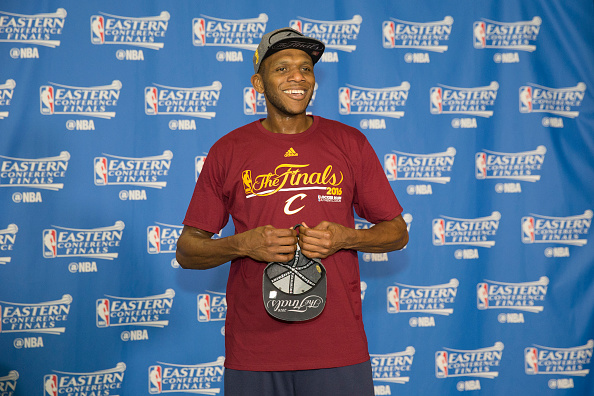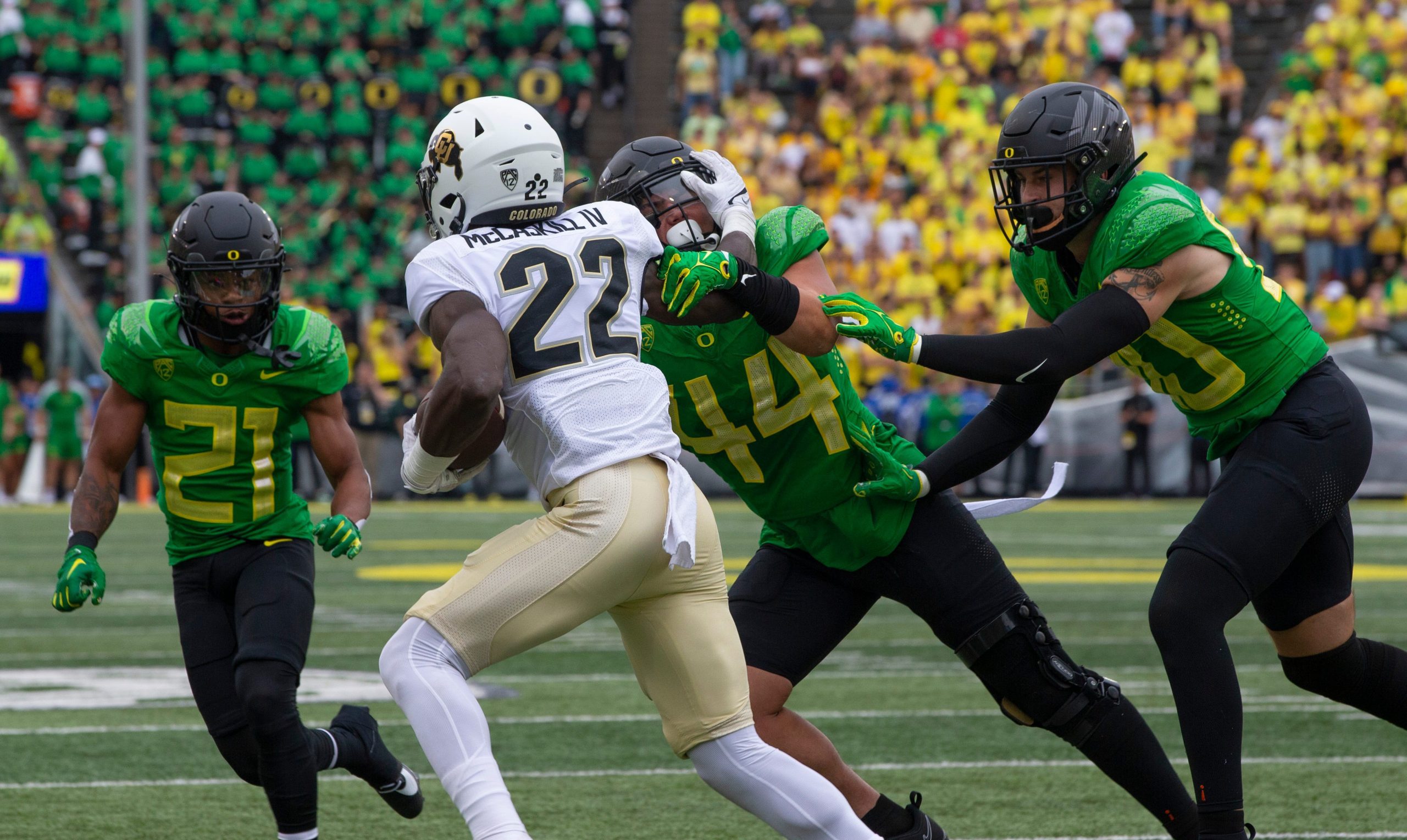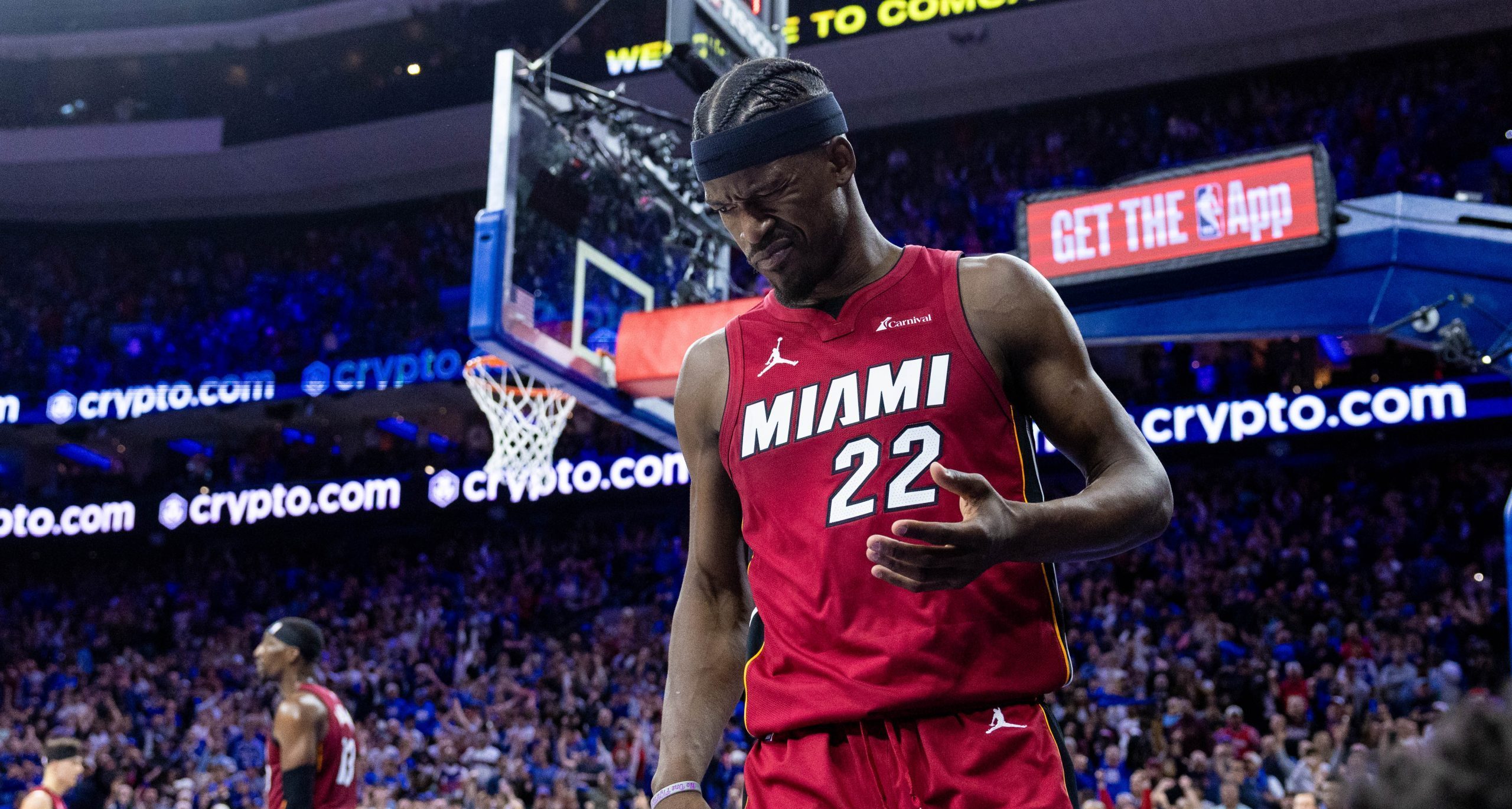When the NBA Finals begin Thursday night, a player will be making his seventh straight trip to the championship series. Practically by definition, that makes him a championship player.
We are, of course, talking about James Jones. No player in NBA history has ridden the coattails of a superstar quite like Jones. He’s won three championships only because he’s been a teammate of LeBron James with the Miami Heat and the Cleveland Cavaliers.
But is Jones — who averaged 2.8 points, 0.8 rebounds and 0.3 assists during the regular season — the worst player to appear in the NBA Finals recently? Not according to Player Efficiency Rating (PER), which measures a player’s positive and negative contributions on a per-minute basis. An average NBA player has a PER of 15. The all-time career leader is Michael Jordan with 27.91. LeBron is second at 27.61.
This past season, Jones compiled a 11.19 PER. But is he the worst player to get to the NBA Finals over the past 10 years? Nope. Several have been much worse. Here is a list of the worst NBA Finals players since 2007.
10. Norris Cole, Miami Heat (2012, 2013, 2014) — PER: 9.2
When the Heat sunk all of their money into the Big Three of James, Dwyane Wade and Chris Bosh, they didn’t have much financial salary cap flexibility. That meant they had to rely on some subpar players to fill out the roster. Joel Anthony (9.7 PER) was probably LeBron’s worse starting teammate in Miami, but Norris Cole was the worst overall player.
I can't stand Norris Cole. Has played absolutely terrible today. Just turrible pic.twitter.com/OXV3Ex5tgn
— Stephen Roberts (@SteveRobOKC) April 23, 2017
Playing with LeBron, Wade and Bosh, Cole had plenty of wide-open shots. Despite that, he hit an abysmal 31.8 from three-point range during his four seasons in Miami. He did have one big contribution, however. In Game 4 of the 2012 NBA Finals, he helped the Heat rally from a 33-19 deficit against Oklahoma City. Cole made a pair of three-pointers which helped Miami cut the deficit to 49-46 by halftime. Miami won 104-98 to take a 3-1 series lead, and went on to win the championship.
That was an aberration. This is more like Cole:
9. Josh Powell, Los Angeles Lakers (2009, 2010) — PER: 9.2
I feel bad for putting Powell on this list. You can argue he’s an overachiever. Unlike Cole, who was a late first-round pick, Powell went undrafted out of NC State after playing only two seasons in college. He had an unremarkable career, but played on a pair of Lakers championship teams and was on the Dallas squad that reached the 2006 NBA Finals.
JOSH POWELL 16×20 LARGE PHOTO, UD AUTOGRAPH, LAKERS NBA CHAMPS TROPHY, USA AUTO https://t.co/Y7qnOXJ3LE pic.twitter.com/EPScGoK3n5
— Sports Autographs (@SportsAutograp1) February 27, 2017
Powell’s total contributions in the five NBA Finals games he participated in? Five points. He does have one highlight. In Game 1 of the 2009 Finals against Orlando, he made the game’s final basket – a three-pointer. Was it a critical shot? Nope, it was a garbage-time bucket in a 100-75 rout – one of the biggest blowouts in NBA Finals Game 1 history.
8. Daequan Cook, Oklahoma City (2012) — PER: 9.1
In the 2007 draft, three players from Ohio State were selected in the first round. You remember the first two: Greg Oden (No. 1 overall) and Mike Conley (fourth overall). Daequan Cook was taken No. 21 overall. The trio powered Ohio State to the Final Four as freshmen and all left after one season with the Buckeyes.
Fun fact: Cook and Norris Cole were high school teammates who faced each other for the 2012 championship.
Cook is a three-point specialist. For his career, almost 60 percent of his shots were from behind the arc. In 2011, he shot a career-best and team-high .422 from three-point range. But during the next season – the NBA Finals season – he plummeted to .368. In three NBA Finals games, he played 11 minutes and had one three-point shot that he missed.
At least he’ll have this moment in the 2012 Western Conference Finals:
7. Lazar Hayward, Oklahoma City (2012) — PER: 9.0
Marquette has produced its share of NBA players, such as Dwyane Wade, Jimmy Butler and Jae Crowder. Guess who is the school’s second all-time leader scorer, though? It’s Hayward. The small forward was good enough to be the 30th overall pick in the 2010 draft by Washington (later traded to Minnesota).
He lasted only three seasons, and might be best known for being a part of one of the worst trades in NBA history — when in October 2012, Oklahoma City sent James Harden, Cole Aldrich, Daequan Cook, Lazar Hayward to Houston for Kevin Martin, Jeremy Lamb, two first-round picks and a second-rounder.
Hayward’s NBA career consisted of a total of 72 games, with zero starts. He had almost as many baskets (70) as games played and shot 34.7 percent. Hayward played one games in the 2012 NBA Finals scoring a basket and getting two rebounds. But hey, check him out in the Development League!
6. Royal Ivey, Oklahoma City (2012) — PER: 8.4
Remember him? He was a solid player at Texas. And along with T.J. Ford, Ivey led Texas to the 2003 Final Four. It was a landmark moment for the football-first school. Unfortunately for him, there was also this moment in the Final Four against Syracuse when he got dunked on. He’ll never live that down.
In the pros, Ivey bounced around, playing for four different teams before arriving to Oklahoma City. During his career, Ivey averaged more than 3.6 points just once (5.6 at Milwaukee). He was a decent 3-point shooter (36.1) but was ineffective the closer he got to the basket (42.5 from 2-point range). Ivey also didn’t pass much (one assist per game average – incredibly low for a guard).
In his lone NBA Finals appearance, Ivey scored six (?!?) points and his plus/minus was +7. Of course, that was the series-ending game when Miami won 121-106. Now Ivey is an assistant coach for the Thunder.
5. Bruce Bowen, San Antonio (2007) — PER: 8.2
Surprised? Me too. Don’t squawk at me, Spurs fans. Send your complaints to basketball-reference.com. Yes, Bowen is a three-time champion. Yes, he was one of the best defensive players of his era (Career defensive rating is 87). And yes, his number was retired by San Antonio. That still doesn’t erase the fact that Bowen was a horrendous offensive player. He was effective defensively in part because he stretched the rules a bit.
https://twitter.com/snoop_doggy/status/864529920793432064
Bowen never averaged more than 8.2 points per game. By comparison, defensive stalwart and Hall of Famer Dennis Rodman scored more than that in four seasons. Rodman’s PER is 14.6, but his win share number is 89.8 to Bowen’s 42.9. In the 2007 Finals, Bowen played in all four games, scoring 24 points, shooting 29.6 percent. Of course, he made a name for himself by guarding LeBron.
4. Sasha Pavlovic, Cleveland (2007) — PER: 8.3
The 2006-07 Cavaliers might be the ultimate testament to LeBron’s greatness. He dragged a team whose second leading scorer was Larry Hughes to the Finals. Think about that. Without LeBron, there’s no way a team with Hughes, Drew Gooden and Zydrunas Ilgauskas even makes the playoffs.
https://twitter.com/connertimoney/status/857385112337620992
James helped make European import Pavlovic serviceable. He had his highest scoring average (9.0) and shot a career-best 45.3 percent in 2006-07. But for most of his career, he wasn’t very good. You could make the argument that he’s on the short list of all-time worst shooting guards to start multiple NBA Finals game. The Cavs were swept by the Spurs, but Pavlovic averaged 9.8 points by making 5-of-12 treys in four games.
3. Joe Harris, Cleveland (2015) — PER: 7.9
Joe Harris would have been higher on this list if not for a “breakthrough” season last year with the Brooklyn Nets. Previously with Cleveland, not even LeBron could boost Harris. The 2014 second-round pick out of Virginia played 56 games with the Cavaliers. He totaled 139 points. In the NBA Finals, Harris got into two games. He didn’t even take a shot in limited action, but did make a free throw.
Harris was much more productive in Brooklyn where he averaged 8.2 points and shot a career-best 42.5 percent. Of course, those Nets were also the worst team in the league. But let’s not rain on Harris’ parade.
https://www.youtube.com/watch?v=cp_SQ8hCPxM
2. Brian Scalabrine, Boston (2010) — PER: 7.7
You knew the White Mamba was going to be somewhere on this list. Scalabrine was the human victory cigar or the clear-the-bench guy. If the 6-foot-9 forward was in the game, his team was either winning in a rout or getting blown out. He was almost like Boston’s version of Mark Madsen – except perhaps he’s a better dancer.
REPORT: Brian Scalabrine says he's insulted that his name never comes up in Jordan vs LeBron debates, says it's clear who the real GOAT is
— NOTSportsCenter (@NOTSportsCenter) May 27, 2017
Scalabrine developed somewhat of a cult following. With his red hair and headband, he looked like guys who just stumbled into a pickup game. If he weren’t 6-foot-9, Scalabrine would look like an average guy. He ended up parlaying his mini-celebrity into broadcasting career. After all, who doesn’t love the analysis of a guy who failed to record a point, an assist or rebound in his lone NBA Finals appearance?
1. Terrel Harris, Miami (2012) — PER: 3.5
Who? Exactly. Only a diehard Oklahoma State fan would remember Terrel Harris. He went undrafted and spent the early part of his career playing in Europe and the NBA D-League. He was once waived by the Maine Red Claws. If you can’t make it playing basketball in Maine, how in the hell do you wind up in the NBA Finals?
14 Days till Opening Night! Remember Terrel Harris?@MiamiHEAT @iRepTeamHEAT @mikescriba @rickypulido305 @UD305FanPage pic.twitter.com/GVjKFDy16c
— Spencer (@SpencerHNDRXX) October 15, 2014
Against all odds, he made the Heat’s roster in 2011. Harris’ hustle paid off with him joining the team on Christmas Eve. The 6-foot-4 guard played only 22 games but also appeared in four playoff games. A dream came true for Harris when entered Game 5 of the NBA Finals. He made three free throws in the final three minutes of the series-clinching victory.
Harris’s NBA career lasted only 42 games, playing for Miami and New Orleans. He might be the worst ever player to play in the NBA Finals. But in our books, he’s a winner.






